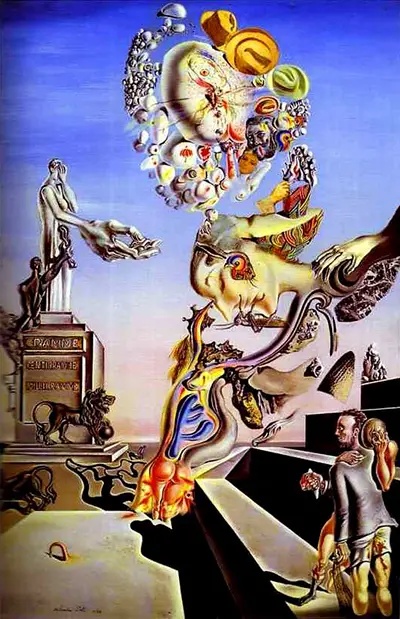The content in this piece is so thought provoking that it defies all matter of time. There is, of course, a creation date for the bizarre, surreal masterpiece. In 1929, Salvador Dalí gave birth to The Lugubrious Game, impressing and intriguing fellow surrealists, Paul Éluard, and also his wife Gala. The glowing impression that Dalí engraved into the art world with this piece led to him becoming an official member of the 20th century surrealist movement.
The piece is breathtakingly busy. One could spend hours, days, or more, analysing it; and still be unsure of exactly what Dalí was trying to say. One thing is certain, though. The Lugubrious Games is the passionate, risqué portrayal of a deeply disturbed, sexually centred man. It is adorned with Dalí's erotic fantasies and fears, subtly placed about the piece. Each one speaks metaphorically of his fixations. The statue's dramatically oversized hand, for example, suggests to onlookers that the subject of masturbation is present and commanding. Perhaps, the focal point of the piece is the man in the corner. He is wearing soiled underpants, which display a clear and vivid reference to faeces. Crippling fear, sexual desire and castration are all thought to play a role in this aberrant, surrealist, piece of art.
The Spanish surrealist, Dalí, created The Lugubrious Game using oil paints and collage art. Originally, the piece was on cardboard; but like all great artwork, prints have been made for adoring fans to cherish as their own. Now, as he passed away in January 1989, copyright on all of Salvador Dalí's work, including The Lugubrious Game, is held by the Spanish State. The original piece, however, is in the hands of a private collector - Charles de Noailles - a French nobleman and patron of the arts. He purchased the piece in 1929 for an assumed 29,000 Francs. Since then, The Lugubrious Game has been displayed in many exhibitions across the world, but always makes its way home to the Noailles family.

